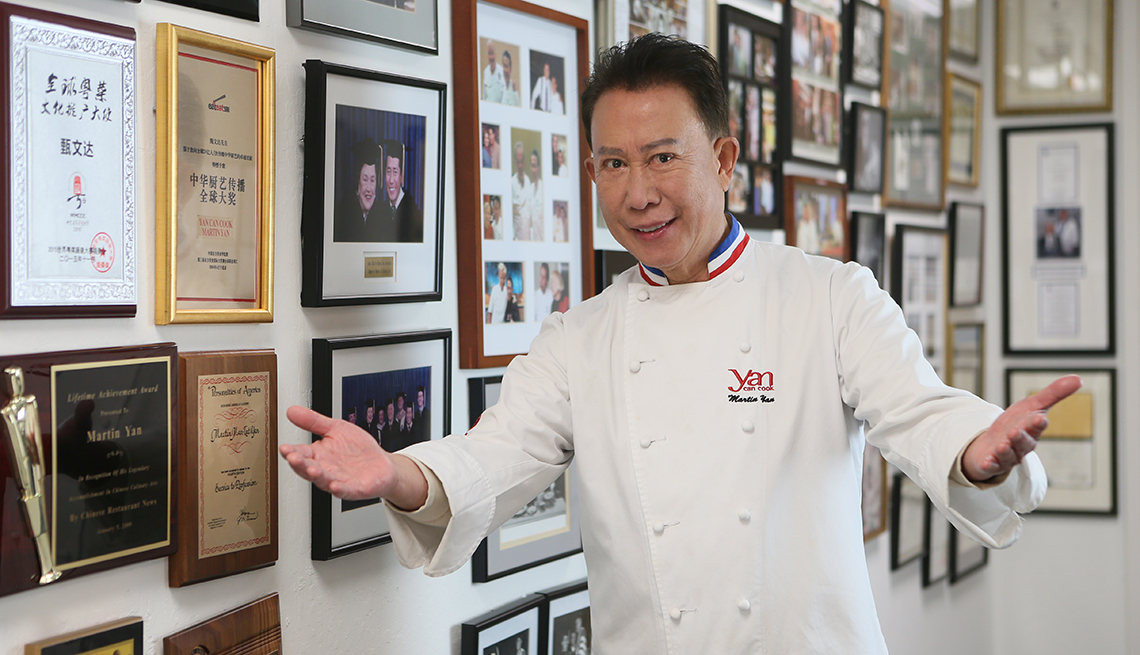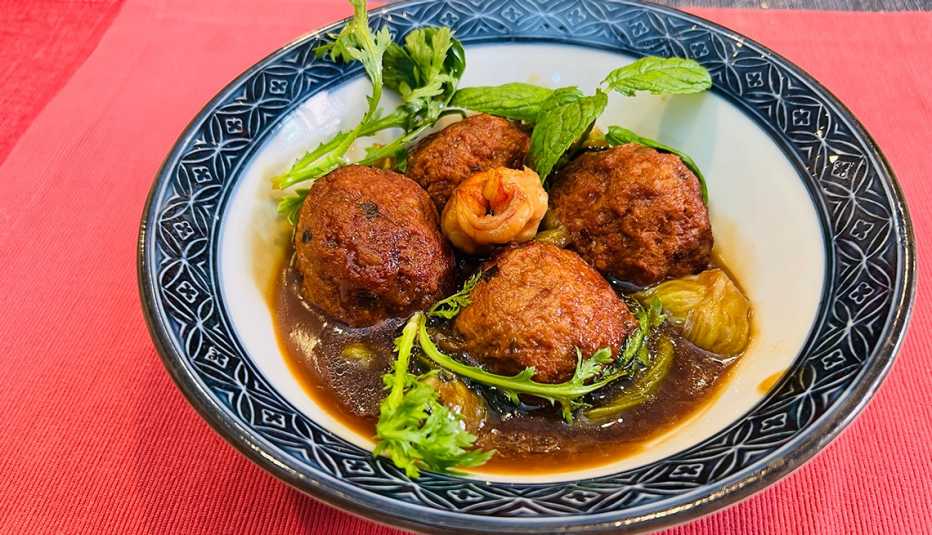Staying Fit
Martin Yan is always in motion.
In the kitchen of his Bay Area home, he flits behind an island table filled with his latest creations: meatballs, rice pudding and lotus sandwiches artfully presented with a tableau of red envelopes and golden oranges.


AARP Membership— $12 for your first year when you sign up for Automatic Renewal
Get instant access to members-only products and hundreds of discounts, a free second membership, and a subscription to AARP the Magazine.
The chef, who started cooking on TV for an American audience in 1982, just finished livestreaming a free monthly cooking demonstration in partnership with On Lok, a nonprofit center that provides services to older adults in the Bay Area. The menu is timely: Lunar New Year dishes.
The livestream is a different production than Yan Can Cook, the long-running PBS cooking show that made him a household name before the term “celebrity chef” was part of the pop culture zeitgeist. But Yan, 74, who was born in China, doesn’t miss a beat. He talks directly to the camera and flashes his megawatt smile while distilling Lunar New Year cuisine.
On January 22, many Asian Americans and Pacific Islanders will celebrate Lunar New Year and usher in the Year of the Rabbit. Traditional Lunar New Year food is steeped in symbolism, Yan says. He’s been the self-proclaimed ambassador of Chinese food and culture in the U.S. for over 40 years. Last year, he won the James Beard Lifetime Achievement Award.
For Lunar New Year, Yan spoke with AARP about the role that food plays in marking the occasion.
Why is food a central part of Lunar New Year celebrations?
Yan: Lunar New Year is also referred to as Spring Festival. That’s the time that in most parts of China is the springtime. Basically, to celebrate Lunar New Year is also celebrating the coming of a new spring. Food plays a very important, pivotal role in the celebration of any special auspicious occasion. And Chinese New Year is by far the most auspicious occasion, the most celebrated occasion in the Chinese lunar calendar.
Is there symbolism behind some dishes?
You go to any Chinese restaurant during Chinese New Year, they will always serve the whole fish — never fish fillets. You want to serve the whole fish because when you serve whole, that is wholesomeness; that is completeness. You don’t want to have part of the fortune. You want to have the complete fortune. Fish is yú. In Chinese it sounds like “abundance.” Shrimp and lobster are often served, too, because shrimp and lobster look like a traditional, mystical dragon. Then, of course, another thing served on all auspicious occasions, particularly Lunar New Year, are noodles. Noodles are long, right? Being long is symbolic of long life.








































































